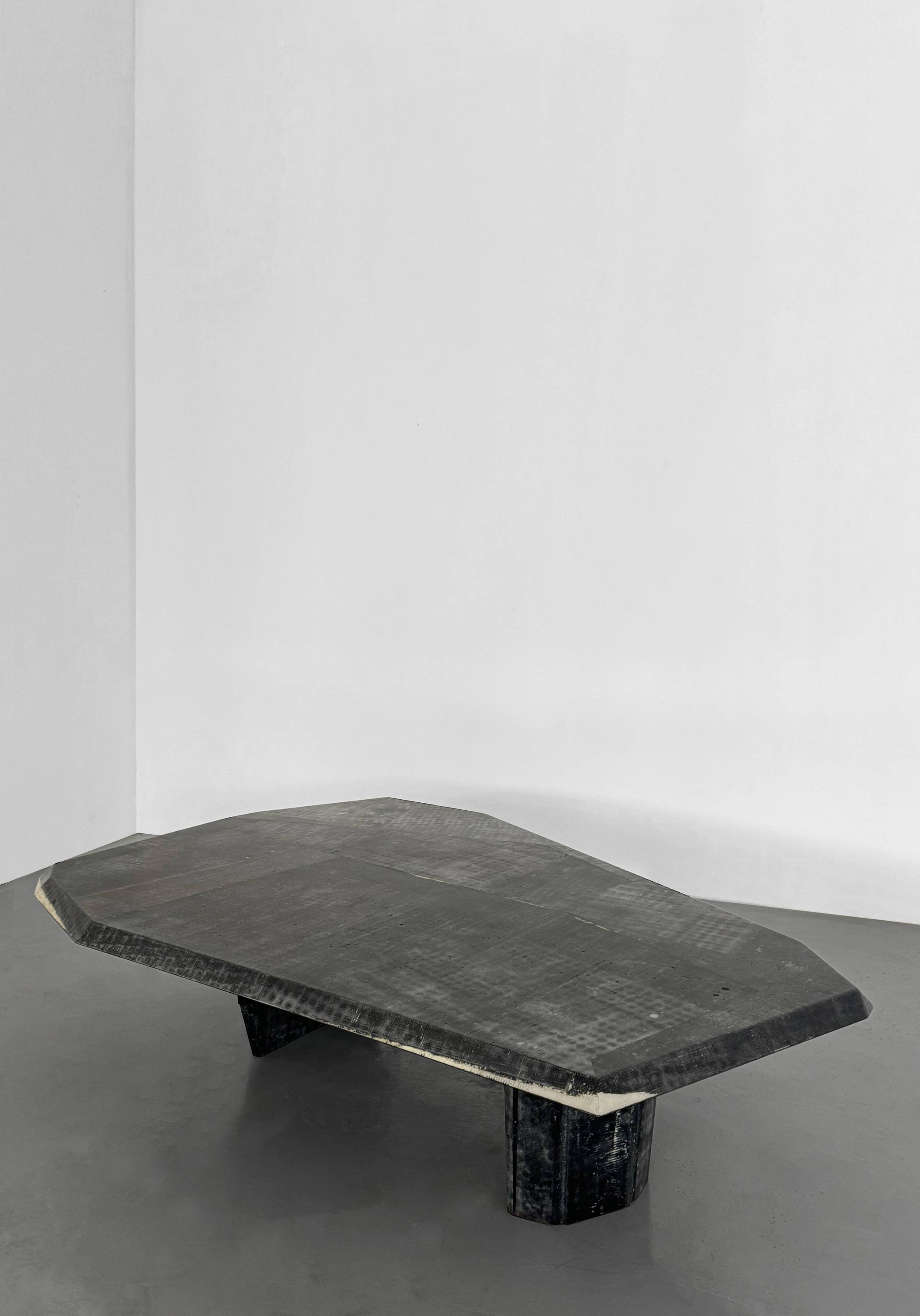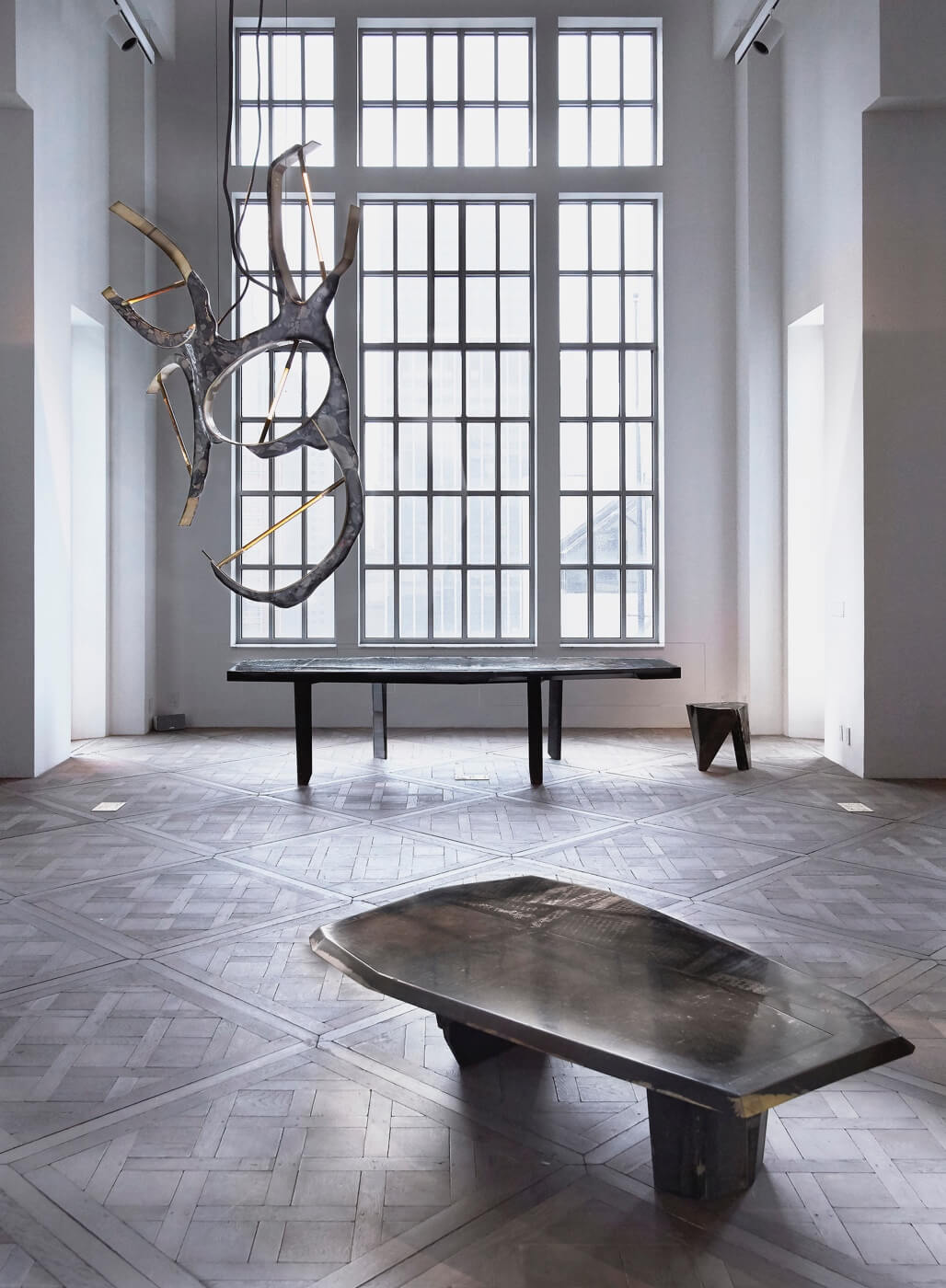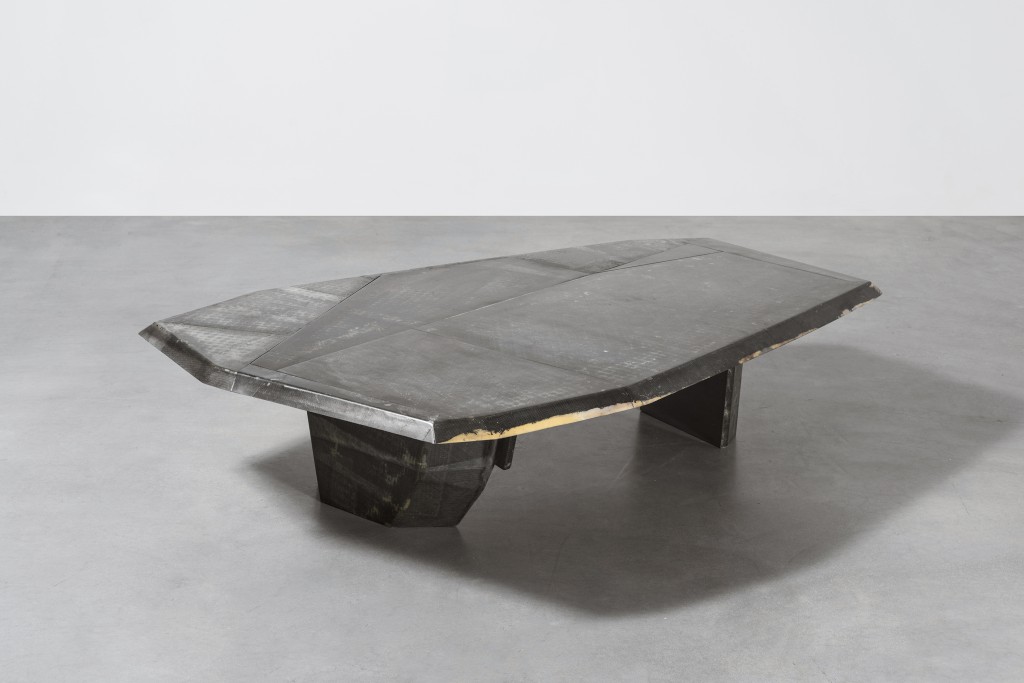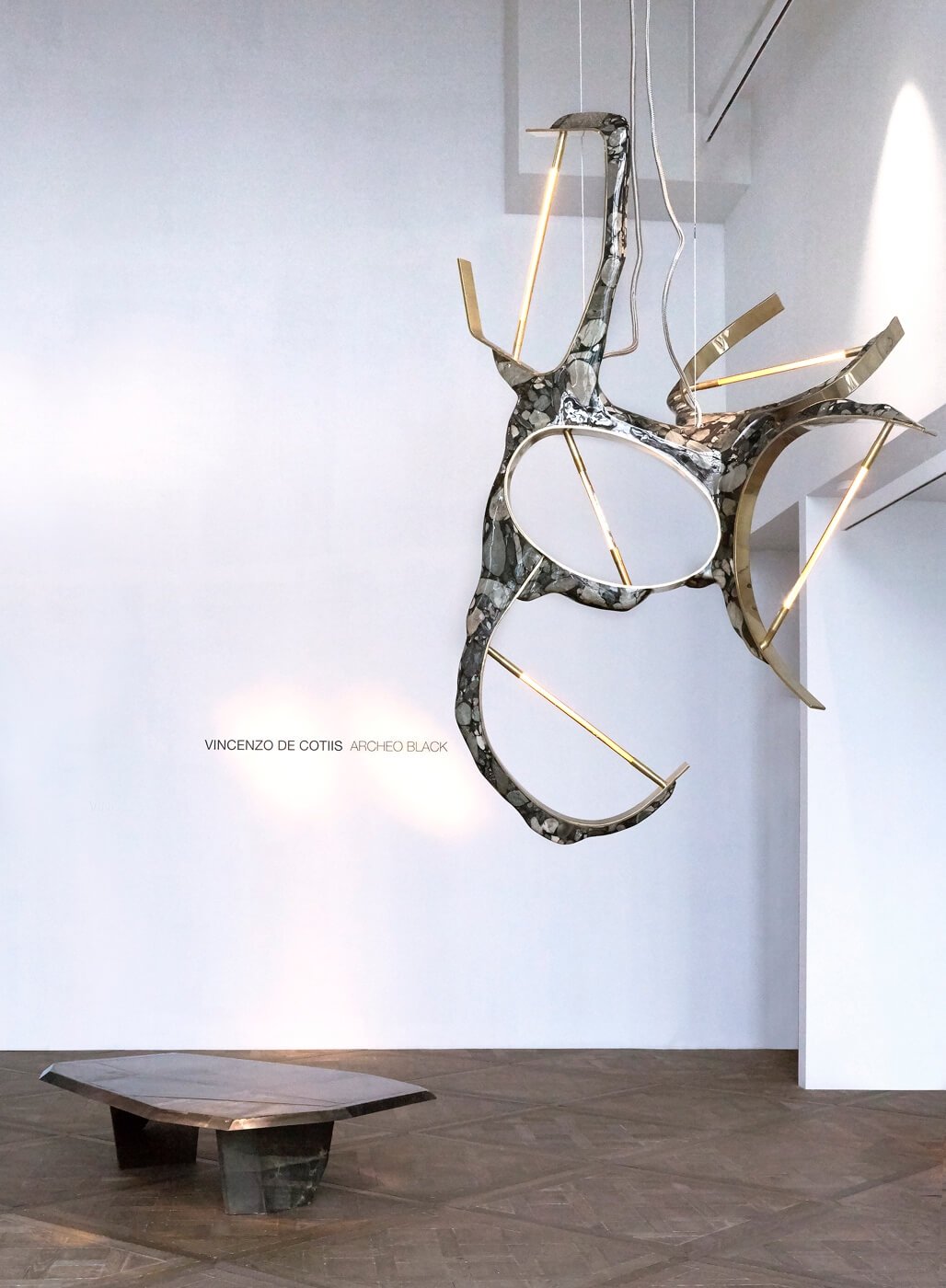Vincenzo De Cotiis’s Archeo Black is a dark, tactile furniture and objects series that reads like an archaeological find remade for contemporary interiors. The collection — shown in major gallery exhibitions and widely covered in design press — pairs rough, patinated surfaces with refined, almost sculptural volumes. Rather than pure ornament, these finishes act as narrative skins: time-stained, layered and physically intimate.
Product focus — what “Archeo Black” actually is
Archeo Black is a series of tables, sideboards, seating and sculptural objects that combine materials such as hand-finished resin/fiberglass, inlaid stone or marble accents, painted surfaces and reclaimed textures. Each piece is conceived as a monolithic object whose surface tells a story: peeling gradients of black, subtle cracks, and textured patinas that reveal “layers” as if the object had been excavated. The overall effect is simultaneously primitive and extremely contemporary — a collectible object that functions equally well in a domestic interior or a curated gallery.

Designer mindset — archaeology, ritual and surface as language
De Cotiis’s practice is driven by a persistent interest in time, memory and the poetic capacity of materials. For Archeo Black he began with the idea of archaeology-as-metaphor: what if furniture could wear time on its skin? The mental model combines references to ancient artifacts (their weight, imperfections and symbolic marks) with a modern sculptural minimalism. De Cotiis intentionally lets imperfections — cracks, uneven pigmentation, visible joins — become the expressive vocabulary of the object: signs of age that make each piece feel singular and storied rather than merely manufactured.
From inspiration to initial concept — research and sketches
Archeo Black started with research into textures, archaeological fragments and non-Western sculptural idioms. De Cotiis sketches and model-makes to explore volume, then tests how different surface treatments change perception: a smooth silhouette can feel monumental or intimate depending on whether its skin is polished or distressed. Early work also explored how black — in its many depths and sheens — can reveal or hide form, so a large part of the concept work was about calibrating contrast: where to let light catch an edge and where to subdue a plane to reveal texture instead.
Material choices and surface technique — the sculptor’s bench meets the atelier
Materials are chosen for their ability to take a patina and to hold micro-details. De Cotiis’s team experiments with layered resin/fiberglass shells, hand-applied pigments, stone inlays and selectively sanded surfaces to produce the “archaeological” effect. The surface work is often manual: sanding, brushing, selective polishing and staining produce depth and stratification. In some pieces, fibreglass shells are combined with embedded marble fragments or hand-painted finishes that simulate weathered stone, so the piece reads as both constructed and discovered.

Prototype & testing — making “age” believable
Creating convincing “aged” surfaces requires experimentation at multiple scales. De Cotiis’s process typically includes: small sample panels to test pigments and abrasion; full-size mockups to verify scale and how light interacts with texture; and durability tests to ensure that the patina reads as intentional rather than fragile. For Archeo Black the team iterated until the distressing techniques looked authentic under gallery lighting but also resisted everyday handling — an important balance when pieces move from galleries into collectors’ homes.
Manufacturing & craft — hybrid studio workflows
Archeo Black sits between craft and industrial process. Structural elements (cores, internal supports) are engineered for stability, then hand-finishing is applied to the exterior. This hybrid workflow lets De Cotiis achieve repeatable silhouettes while preserving the unpredictability of hand-applied surfaces. Production decisions — whether to caste a tabletop in fibreglass or to inlay natural stone — are made per-design, and small-edition runs allow the studio to control finish quality while offering collectors variation and rarity.
Ergonomics, functionality and “collectible” positioning
Although sculptural, Archeo Black pieces are designed with use in mind: tabletops are leveled, storage components are serviceable, and seating is dimensioned for comfort. De Cotiis occupies a unique market position — between furniture and art — which means pieces are conceived as both usable objects and limited-run collectibles. This positioning affects everything from finish selection (durable pigments) to joinery (serviceable drawers and removable hardware) so the works can live as daily objects without losing their gallery appeal.

Curatorial and exhibition history — where Archeo Black has lived
Archeo Black was presented at major curated shows — notably at Carpenters Workshop Gallery in New York — and featured in international design press for its material narratives. These exhibitions helped position the series within the “collectible design” discourse and introduced De Cotiis’s material experiments to collectors, curators and specifiers worldwide. The collection’s presence in gallery circuits reinforces its dual identity as both artwork and high-design object.
Why juries and critics respond — narrative, tactility and craft
Critics praise Archeo Black for its ability to translate a conceptual idea (time as surface) into visceral, tactile objects. Jurors and editors often highlight three strengths: the clarity of the concept, the honest material exploration, and the finished object’s ability to occupy both domestic and exhibitionary contexts. In other words, De Cotiis convinces readers and buyers both intellectually and physically — the pieces have an idea and a skin that proves it.
Sustainability and lifecycle thinking — longevity as environmental strategy
Archeo Black’s sustainability case emphasizes longevity and repairability rather than mass recyclability. By producing durable, collectible pieces with repairable finishes and replaceable components, the project seeks to reduce churn and encourage long-term ownership. The studio’s small-batch production and careful finishing also reduce waste from large-scale, speculative manufacturing — an approach aligned with current procurement priorities in the luxury and collectible markets.

Takeaways for designers and product teams
Let surface tell the story. A powerful finish can convert a simple form into a narrative object.
Prototype the patina. Surface effects reveal themselves only at scale; test extensively.
Hybridise craft and engineering. Use repeatable cores with hand-applied skins to combine quality with variation.
Design for longevity. Collectible objects justify craft investment and reduce lifecycle waste.
Position clearly. If a product sits between art and furniture, align marketing, pricing and distribution to that hybrid identity.



